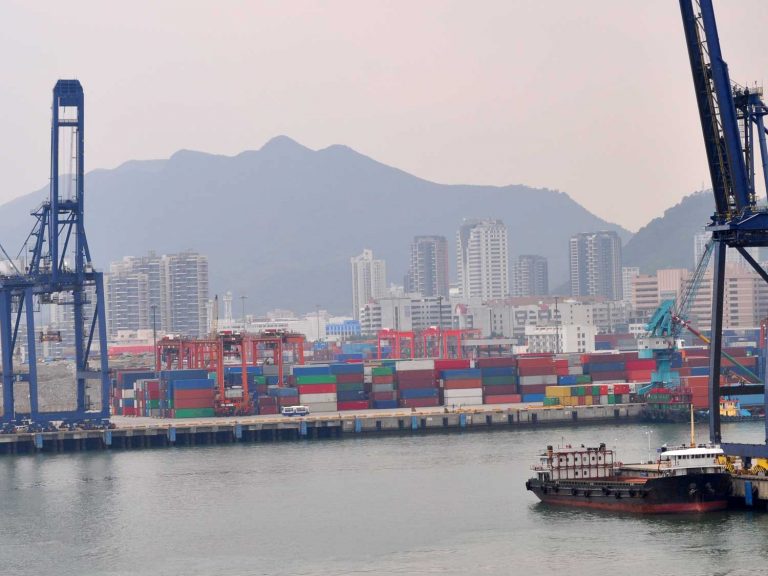
Date:
China exports surge even as consumer demand weakens
Container volumes at eight of China’s top ports surged 25% to 16.8 million TEU in April, largely driven by consumers in Europe and the US, but manufacturers are anticipating weakening demand.
According to figures released by China’s Transport Ministry, only Shanghai recorded a decline in sea freight throughput in April, the first full month of the city-wide lockdown that has closed factories and slashed trucking capability and capacity, due to government restrictions in the movement of its Citizens.
Transport Ministry figures show month-on-month volumes at Shanghai fell 19% in April to 3.1 million TEU from 3.8 million TEU in March, while other ports, including Tianjin (+48%) Shenzhen (+43%), Guangzhou (+35%), Ningbo (+32%) and Qingdao (+31%) experienced double-digit increases.
Ningbo’s 32% increase in volumes, to more than 3 million TEU in April, was massively boosted as shippers diverted cargo, to avoid the disrupted trucking and port operations in Shanghai.
With Shanghai starting to ease lockdown restrictions carriers are reporting improving logistics and supply chain performance, with Maersk resuming operations at 25% of warehouses, including facilities in Pudong, the area closest to the main port areas at Yangshan and Waigaoqiao.
Despite the massive volumes moving through China’s ports, manufacturers are bracing for more pain as rising interest rates and inflation combine to increase prices and dampen US and European shoppers’ enthusiasm for goods, with many already shifting towards buying services than goods.
Some manufacturers are reporting that while overall demand remains robust, orders for delivery in the final quarter look weaker, with buyers becoming very tentative in restocking and ordering.
While some of the spending shift reflects a return to normal buying habits, some of it also reflects rising inflation and interest rates, fading government stimuli and volatile financial markets.
The slowdown isn’t a trade recession because underlying demand remains solid and consumers do have money to spend, but the downshift is notable and the WTO lowered its projection for growth in merchandise trade this year to 3%, down from its previous projection of 4.7%, while Asia’s manufacturing sector contracted in April for the first time since June 2020.
Evidence from South Korea, often seen as a bellwether for international trade, is showing an enduring slowdown in exports, with shipments from Taiwan also down and China’s lingering zero-COVID policy creating further hurdles.
While many financial indicators may point to risks in the global economy, amid recession warnings, we’re not there yet and any slowdown will enable global supply chains to shake off any lingering ‘performance’ issues, which in turn will ensure that the recovery, when it comes, will be super-charged by cost-effective and efficient global freight infrastructure.
Whatever challenges your supply chain may face, the long term fixed price and capacity agreements we have in place with our partner carriers mean that we are well positioned to continue to deliver resilient, consistent and reliable supply chain movements.
Metro’s cloud-based supply chain management platform, MVT, simplifies the most demanding global trading regimes, by making every milestone and participant in the supply chain transparent and controllable, down to individual SKU level.
To discuss how our technology could support your supply chain, please contact Simon George our Technical Solutions Director or Elliot Carlile.
